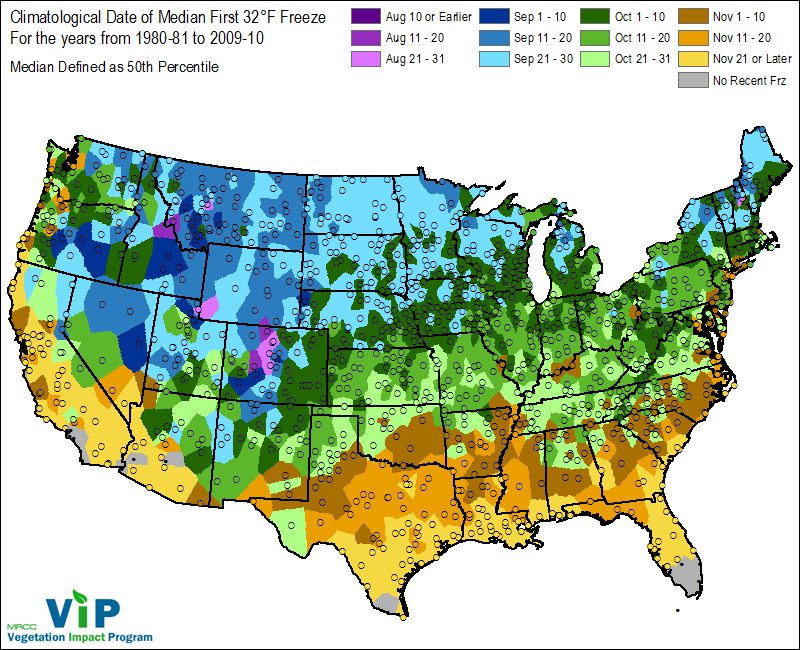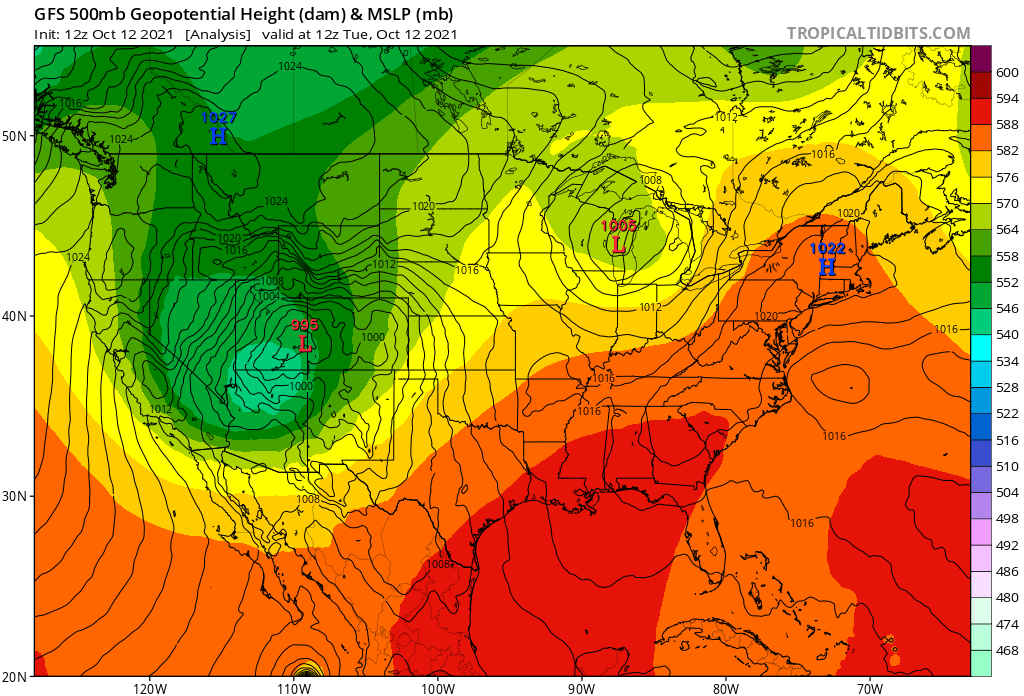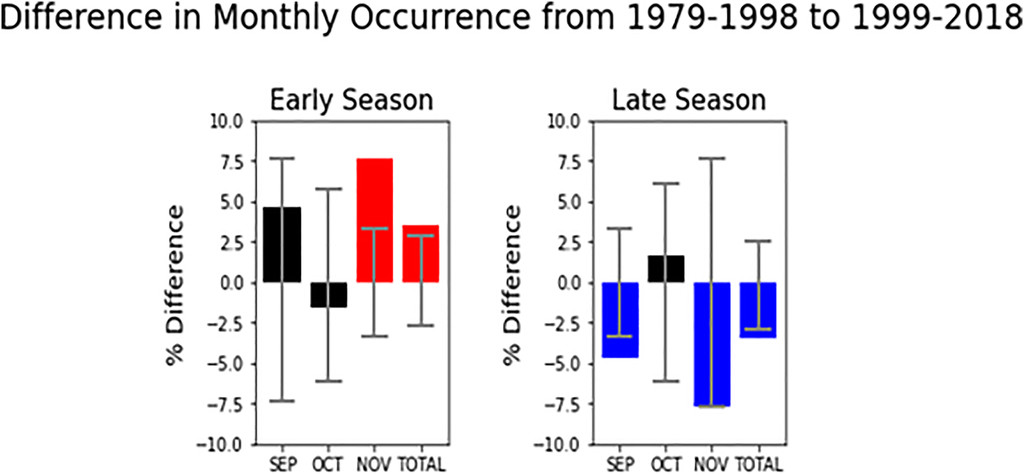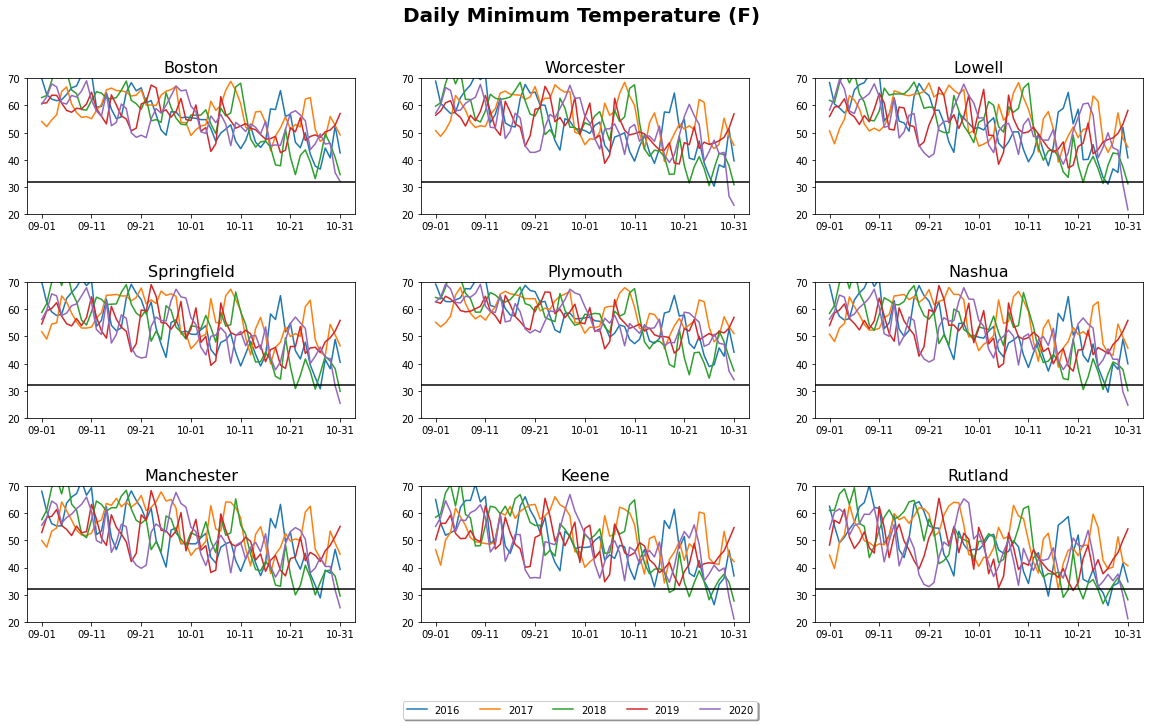Where's Autumn this year?

The crisp leaves, the scent of apples and cinnamon wafting through the air, cool, chilly air that only a flannel can protect against. Autumn in New England conjurs up these images and feelings as soon as September begins its turn into October. This year however, Autumn is conjuring feelings of a continuation of summer, with its warmer than average weather, thunderstorms, and moist, humid air.

So what’s going on this year? A persistent upper-level trough has been over the Pacific Northwest for the better half of the past month, bringing ridging and unseasonably warm weather to the rest of the U.S with it. The jet stream has been driving warmer than average temperatures (up to 20-30°F above average in some areas of the U.S.!), with it’s grip finally beginning to loosen as cooler air has been working its way into New England the past week.
Connection to Climate Change

Many studies have been done looking at changes in the timing of seasons, *Cooter and Leduc 1995 and *Easterling 2002 both found that the average first frost date was coming later in the year(0.5 days per decade), while the last frost date is coming earlier in the year (1.3 days per decade). This suggests that summer is getting longer on both ends, moreso in the spring season. Our recent study on the *Autumn Season in the Northeast U.S. found that weather patterns related to summer are occurring later into the autumn season, while weather patterns related to winter aren’t occurring as often early in the season. This is to say that due to summer lengthening, the typical onset of weather we associate with autumn is delayed, and cooler weather is less likely to occur in September and October than before.

The above map shows the past 5 years of temperatures for September and October plotted for some of the climate sites around Massachusetts, New Hampshire, and Vermont. We see that over the past 5-years, these sites have been seeing their first frost date (first day with a minimum temperature at or below 32°) towards the middle of October for sites further north, and towards early November for sites further south. This is a change of almost 2 weeks compared to the expected median timing of first frost for these regions! Expect these changes to be the new climate normal as we keep going forward.